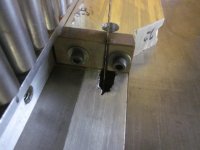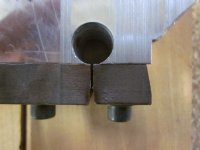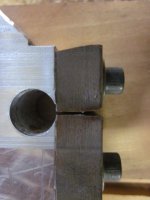richard newman
Titanium
- Joined
- Jul 28, 2006
- Location
- rochester, ny
Building a resaw power feed gizmo that will include a bottom guide, and I'm wondering if I should use Cool Blocks. Are they as good as advertised?
I prefer guide blocks to ball bearings, chips find there way in there and jam the blade or throw the bearings out of adjustment, plus they are noisy. My Tannewitz has hardened blocks, they work great, wondering if Cool Blocks are an improvement. I want to set them up with minimum clearance.
I prefer guide blocks to ball bearings, chips find there way in there and jam the blade or throw the bearings out of adjustment, plus they are noisy. My Tannewitz has hardened blocks, they work great, wondering if Cool Blocks are an improvement. I want to set them up with minimum clearance.








